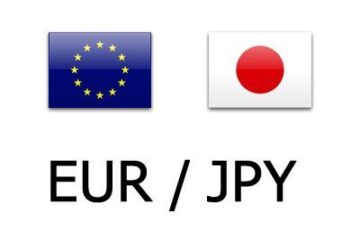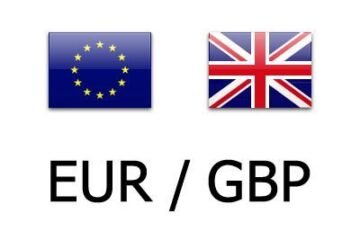There are several economic reports worth looking at this week, but pay closer attention to two economic events.
One will come from London. The other comes Friday from Michigan.
Both events can cause investors to buy or sell stocks, bonds or even houses. Futures trading Sunday evening suggests stocks will open modestly lower on Monday.
In between are two inflation reports probably that will probably paint a benign inflation picture — for now.
Related: Markets start to gear up for summer drama
Tariff talks resume
The London event is the meeting between U.S. and Chinese trade officials trying to hammer out a workable tariff deal. It’s not clear if anything major will come from the meeting, but one can hope.
The last time there were talks, the two sides agreed on May 21 to come to an agreement on the issues in 90 days. That would mean by Aug. 11. But little has happened since, and the Trump Administration is getting impatient.
The U.S, team will include Treasury Secretary Scott Bessent, Commerce Secretary Howard Lutnick and U.S. Trade Representative Jamieson Greer. China’s team will be led by Vice Premier He Lifeng.
At the time of their first meeting in Switzerland in May, the Chinese were charging 125% tariffs on U.S. goods. The U.S. had imposed 145% in tariffs on Chinese goods.
Related: Scott Galloway sends blunt message to Elon Musk
After the May meeting, the tariffs on Chinese goods were dropped to an average 51%. The Chinese tariffs on U.S. goods were dropped to an average 32.6%. (Sounds reasonable, but they could wipe out a retailer’s annual profit.)
Complicating matters is China produces 90 % of rare earth metals, important materials for use in electric vehicles and other products work. And the country is now holding back on export licenses so non-Chinese companies can buy the materials. Without the rare earths, assembly lines could shut down.
It sounds dull but isn’t. China is a major source of everything from semiconductors and auto parts to Apple (AAPL) iPhones. Oh, and let’s not forget: Most toys made for the holiday season are produced in China.
If the London meeting goes badly, financial markets could swoon again.
After President Trump announced the U.S. tariff proposals on April 3, the Standard & Poor’s 500 Index fell 10.5% in two days.
Stocks soared on the decision to negotiate. On April 8, the S&P 500 was down as much as 15.3% for 2025. It’s now up 2% on the year.
Related: Veteran investor makes surprising Fed rate call after jobs report
Gauging how consumers see the economy
Friday’s event is the first cut of the University of Michigan’s Consumer Sentiment Survey for June. (The second comes out at month’s end.)
The Michigan survey has been avidly followed this year because it suggests extreme worries about the economy, inflation and tariffs.
And its findings, optimistic or rotten, have moved markets.
The criticism of the survey is that it generates soft data — basically irrational one-off reactions compared with data based on statistics that have shelf life. Fair enough. But the survey and the Conference Board’s Confidence Index grab attention.
A customer shops at a Walmart store in San Leandro, Calif., in April.
Justin Sullivan/Getty Images
Small business gets a chance to weigh in
The National Federation of Business will release its own confidence index on Tuesday.
Its members have complained for most of the year that the Trump Tariff proposals are making business planning impossible.
So, while many businesses are holding on to workers, they’re being very cautious on spending for, say, new plant and equipment.
A hint on the jobs picture
Thursday’s Initial Jobless Claims report may be concerning. It’s been rising in the last few weeks. This past week, the claims estimate climbed to 247,000, up from 239,000 the week before.
No one wants to see jobless rates climb, least of all the Trump Administration.
In truth, the gains over the last year have been on a slow drift higher. Nothing, in fact, like the first week of April 2020, during the Covid-19 pandemic, when 6.1 million people were laid off in a week.
More Personal Finance:
Denmark raises retirement age to 70 – Could Social Security be next?Dave Ramsey sends strong message on Social Security, 401(k)sBuffett’s Berkshire predicts major housing market shift soon
Is inflation bad or not? It depends
The two inflation reports are widely watched and discussed and will be again this week. The odds the reports won’t change the inflation picture the inflation changing much.
The Consumer Price Index comes out at 8:30 on Wednesday. The report from the Labor Department is likely to show a 0.2% change in prices from April to May and a 2.3% change year over year. That’s unchanged from April.
Stripping out energy and food prices, the one-month change is likely to be 0.2% and the year-over-year change holding steady at 2.8%, the same as in April.
Related: Surprising Trump, Musk rift worsens a huge Tesla problem
The index is built to estimate what’s happening to prices for stuff and services consumers buy.
During the winter, it showed that egg prices rose during the winter as bird flu invaded many poultry farms. But in April, egg prices fell.
Look for indications tariffs are affecting consumer prices. You may see signs in costs for apparel, new and used cars, and meat.
At 8:30 a.m. on Thursday, the BLS’s Producer Price Index comes out. This measures the selling prices producers get for goods and services.
It may show a 0.5% decline month to month but a 2.4% increase year over year. The core estimates are down 0.1% month-to-month and 2.9% year-over-year.
Are these bad numbers? The Federal Reserve thinks so because the central bank wants U.S. inflation at no more than 2%. President Trump thinks the numbers are fine because he wants the Fed to cut interest rates.
He has sort of a point: It would take prices rising at 2.9% a year about 24 years to double.
Remember when the CPI year-over-year change briefly hit 9% in the summer of 2022? Sustained Inflation that high a rate would double prices in 7.5 years.
But that would create its own problems, wouldn’t it?
Related: Veteran fund manager who predicted April rally updates S&P 500 forecast


